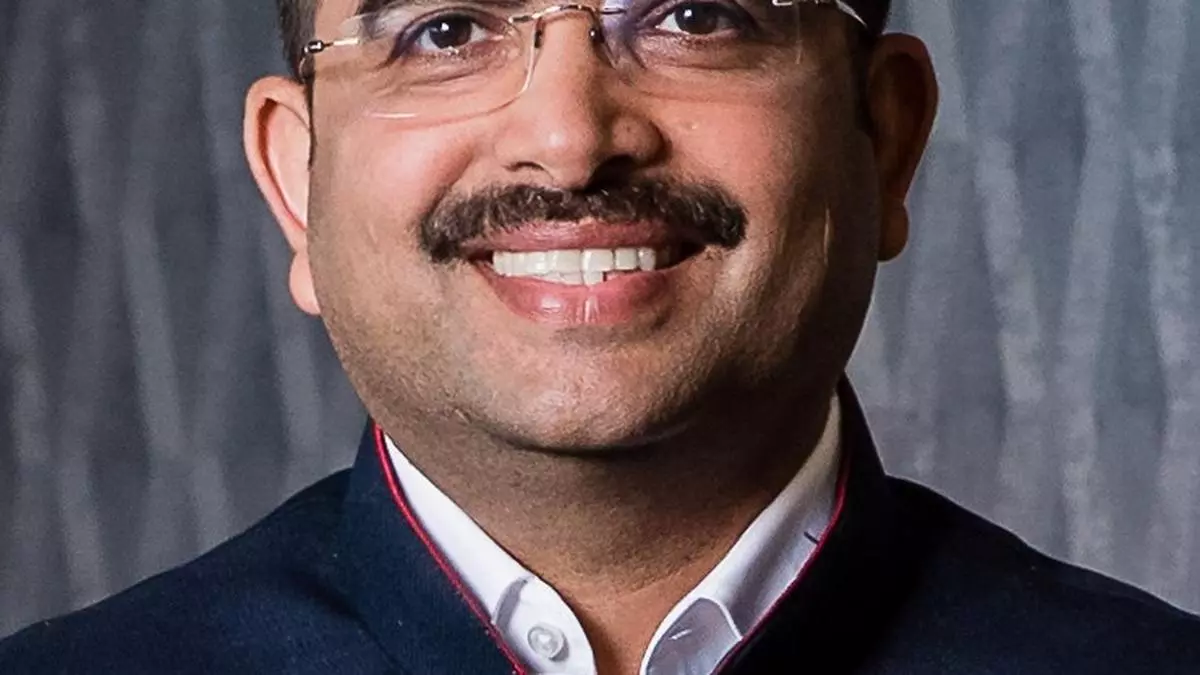Fino Payments Bank’s SFB is a “Payments Bank ++” strategy: CEO Rishi Gupta
Fino Payments Bank views its transition to a small finance bank (SFB) as a “Payments Bank ++” strategy, allowing for larger deposits (+) and offering small-ticket loans (+).
The bank, which applied for a license in December 2023 to convert into a SFB, it expects to hit the ground running once the license comes through as its existing customers, and merchant points will be its first port of call for lending, according to Rishi Gupta, Managing Director & CEO, Fino Payments Bank (FPB), in an interaction with businessline.
Fino will be able reach a credit-deposit ratio of 75-80 per cent, with a loan portfolio of ₹5,000 crore to ₹7,000 crore, three to four years after it becomes an SFB, as per Gupta’s assessment.
Can you give us an update on the proposed conversion of your Bank into a SFB?
We had applied for a SFB license in December 2023. We are awaiting the regulator’s denouement. Currently, it is business as usual as a payments bank. SFB is a “payments bank + +” model.
Our Payments Bank already has rails for account opening and transactions. We achieved more than ₹1 lakh crore of throughput [transactions] in the last quarter (Q1).
So, the transaction platform is robust. We open 7-8 lakh accounts in a quarter. We are servicing corporates on the B2B (business to business) side on the digital as well as the CMS (cash management service) part.
So, lot of foundation has already been built as a payments bank. The “first plus” is that we can do more on the liabilities side. Right now we have a deposit restriction of ₹2 lakh (this is the maximum balance a customer can have at the end of the day). We can’t offer Recurring Deposit/Fixed Deposit. Once we become an SFB, these restrictions will not be there. So, we can work more on the liability products. We will be able to keep the funds of corporates and other entities, which we now have to give to other banks because of the ₹2 lakh limit.
We can keep this in-house. So this will give a big boost to our bottomline.
The “second plus” is credit. Right now, we are piloting with some of the non-banking finance companies in terms how we can use their platform or books to lend (gold loans, personal loans, housing loans, and loan against property) to our own customers.
What changes will you be making on the technology front?
We already have a very good technology infrastructure. But, we are going in for complete revamp of our technology from outsourced core banking solution (CBS) to in-house CBS (Finacle platform). Plus, we are also making the CBS core hollow (lighter) – taking out many applications outside the platform – so that it can better handle management of accounts, loans, transactions, customer relationship, collections, etc.
How will you integrate SFB functions into the already established Payments Bank platform?
Our SFB strategy sits on the Payments Bank strategy, which is based on the DDD principle – distribution, data and digital.
We already have about 18 lakh merchants.
At the end of the day, for any bank to be successful, distribution is the key, whether on the digital side or the physical side. It is always more difficult and expensive to build physical infrastructure. You can spend money and build digital infrastructure faster.
We have built a digital stack for B2B and B2C transactions. We already have data of our customers (base: 1.2 crore) and merchants (about 18 lakh). So they will become our first port of call for originating loans.
We will be a very differentiated SFB. Right now 90 per cent of our income comes from transactions. There are not many SFBs which have transaction income to the extent of 90 per cent.
So, Fino SFB will be a differentiated SFB, with transaction income continuing apace. Our own analysis shows that roughly about 15-20 per cent of our customers have balances above Rs 2,000. So, we feel they are the perfect first port of call for lending.
Can you give us the big picture on how the SFB could shape up?
We will be able to hit the ground running once the SFB license comes through. As a SFB, we will start with small ticket consumer loans (₹10,000 to ₹20,000 ticket size), merchant/MSME loans (largely to meet their working capital requirements), Loan Against Property, housing loans, etc.
We could reach a credit-deposit ratio of 75-80 per cent, with a loan portfolio of ₹5,000 crore to ₹7,000 crore in three to four years after our conversion into a SFB. Building up a liability franchise is more difficult than building a lending franchise.
We will continue to use our existing merchant points for distributing loans. Some of them will be converted into Banking Outlets (BOs)/ Part-Time BOs. We will open some controlling offices. We don’t want to build a very cost-heavy model. Even after we convert into a SFB, we will not need to raise capital for 2-3 years as our internal accruals/ net worth is strong.
Published on October 8, 2024
